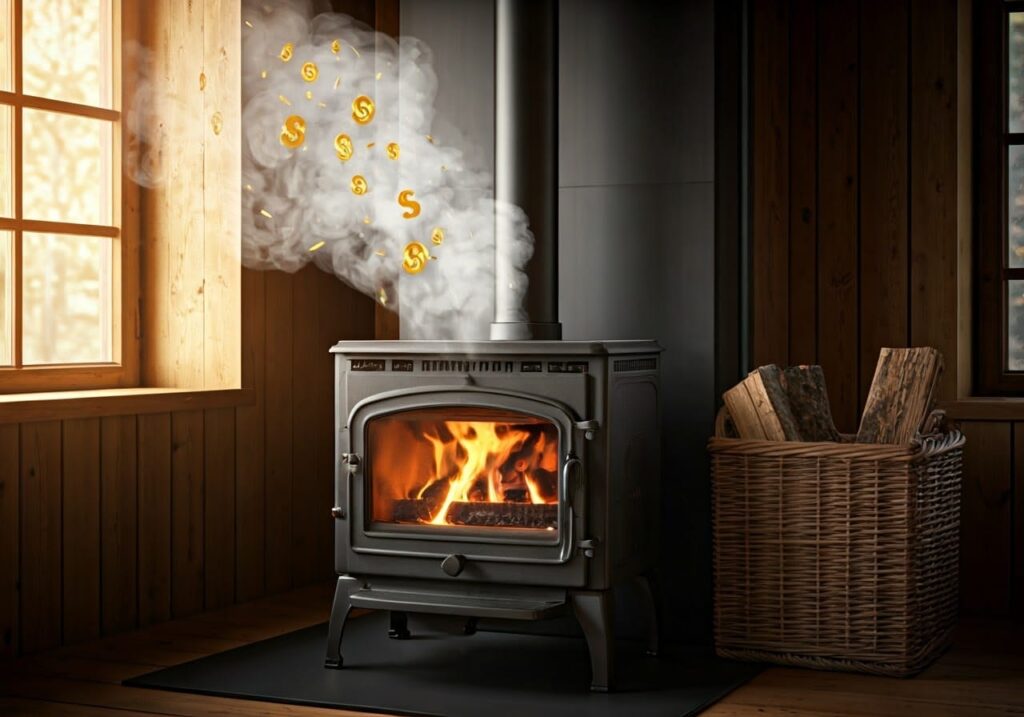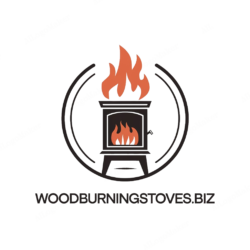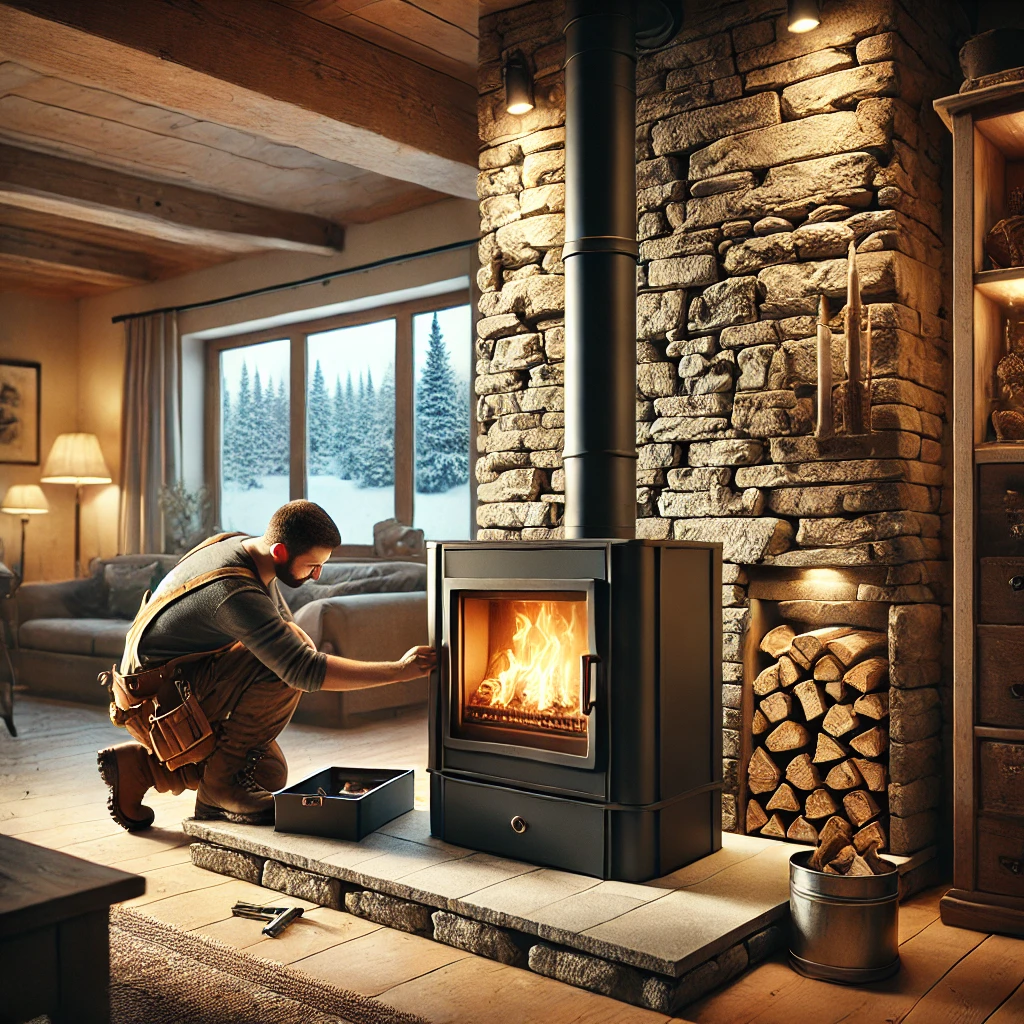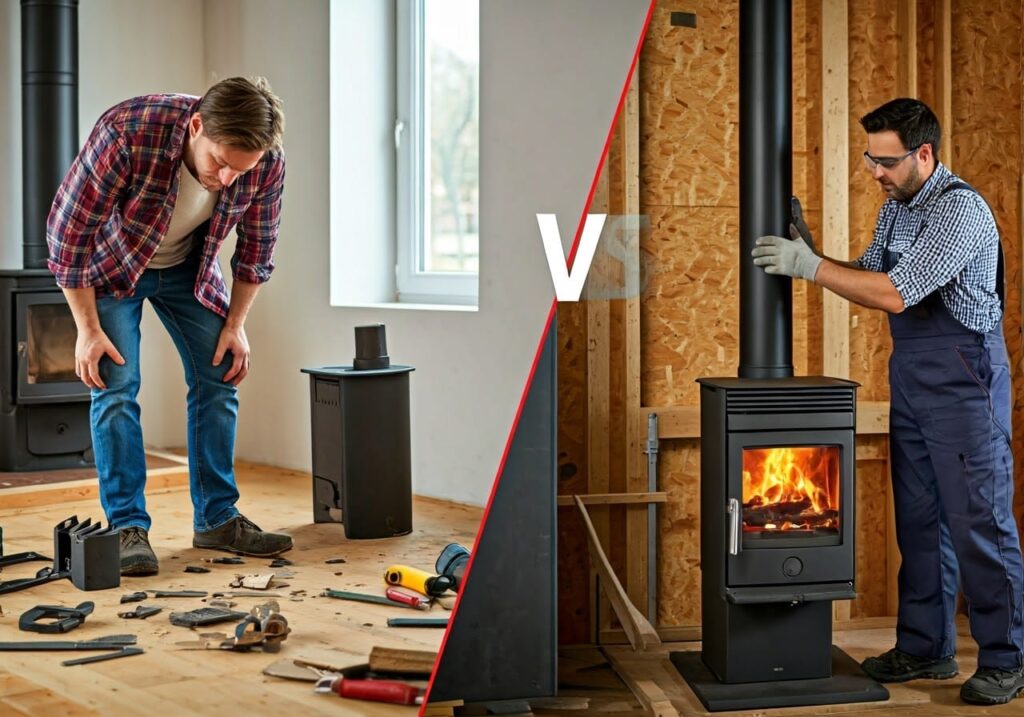Are you considering adding a wood-burning stove to your home but unsure about the associated costs? You’re not alone. The installation process can be complex, and the price tag can vary significantly depending on several factors. In this comprehensive guide, we’ll break down the typical wood stove installation costs and what you can expect to pay to ensure your new heating system is up and running safely and efficiently.

Average Wood Stove Installation Costs
The average cost to install a wood-burning stove can range from $1,500 to $4,000 or more, with the stove itself accounting for $500 to $3,000 of that total. However, several variables can impact the final price, including:
- Stove Type and Size: The type and size of the wood stove you choose will significantly affect the overall cost. Smaller, basic models tend to be on the lower end of the price spectrum, while larger, high-efficiency, or specialty stoves can cost significantly more.
- Chimney or Flue Installation: If your home doesn’t have an existing, suitable chimney, you’ll need to install a new one or a stainless steel flue system. This can add $500 to $3,000 or more to the total cost.
- Hearth Pad or Floor Protection: You’ll need a non-combustible hearth pad or floor protection to safely install the wood stove. Depending on the size and material, this can range from $100 to $500.
- Labor Costs: The installation labor costs can vary widely, from $500 to $1,500 or more, depending on your location, the complexity of the job, and whether you hire a professional or attempt a DIY installation.
- Permits and Inspections: Depending on your local regulations, you may need to obtain permits and pass inspections, which can add $100 to $500 or more to the total cost.
- Accessories and Upgrades: Additional features like blowers, heat shields, or decorative elements can increase the overall price by several hundred dollars.
Let’s break down these costs in more detail:
Stove Costs
The stove itself is the most significant expense, with prices ranging from $500 for a basic, entry-level model to $3,000 or more for a high-efficiency, EPA-certified wood stove. Factors that influence the stove cost include the size, material, and features, such as:
- Efficiency rating (typically 70-80% for modern stoves)
- Burn time per load
- Emissions standards (EPA-certified models are more expensive)
- Aesthetics (such as cast iron or soapstone construction)
- Specialty features (like built-in blowers or thermostats)
Chimney or Flue Costs
If your home doesn’t have an existing, suitable chimney, you’ll need to install a new one or a stainless steel flue system. This can range from $500 to $3,000 or more, depending on the following factors:
- Type of chimney (masonry, prefabricated, or stainless steel)
- Chimney height and diameter
- Accessibility and complexity of the installation
- Whether you need to reline an existing masonry chimney
Hearth Pad or Floor Protection Costs
You’ll need a non-combustible hearth pad or floor protection to safely install the wood stove. This can range from $100 to $500, depending on the size and material:
- Typical hearth pad sizes range from 36 to 50 inches in diameter
- Common materials include tile, slate, granite, or specialized hearth pad kits
- The cost per square foot can range from $10 to $50, depending on the material
Labor Costs
The labor costs for wood stove installation can vary widely, from $500 to $1,500 or more, depending on your location, the complexity of the job, and whether you hire a professional or attempt a DIY installation. Professional installation is highly recommended, as it ensures the stove is properly and safely set up, meeting all local building codes and safety standards.
Permits and Inspection Costs
Depending on your local regulations, you may need to obtain permits and pass inspections, which can add $100 to $500 or more to the total cost. These requirements are in place to ensure the wood stove installation meets safety standards and local building codes.
Accessories and Upgrade Costs
Lastly, you may want to consider additional accessories or upgrades, such as:
- Blowers or fans to circulate heat more efficiently ($100 to $300)
- Heat shields to protect nearby walls ($50 to $200)
- Decorative elements like cast iron or soapstone surrounds ($500 to $2,000)
These optional features can enhance the performance, safety, and aesthetic appeal of your wood stove, but they’ll also increase the overall installation cost.
Factors that Affect Wood Stove Installation Costs
Several factors can impact the total cost of a wood stove installation, including:
- Location and Local Regulations: Costs can vary significantly based on your geographic location, as labor rates, permit fees, and building code requirements may differ. Urban areas tend to have higher installation costs compared to rural regions.
- Existing Chimney or Flue: If your home has an existing, suitable chimney, the installation process will be simpler and less expensive. However, if you need to install a new chimney or flue system, the costs can rise dramatically.
- Home Layout and Accessibility: The layout of your home and the accessibility of the installation site can impact labor costs. Installations in tight spaces or with difficult access may require more time and effort, leading to higher overall expenses.
- DIY vs. Professional Installation: While a DIY wood stove installation can save you money on labor costs, it’s generally not recommended unless you have significant experience. Professional installers ensure the job is done correctly and safely, meeting all local codes and regulations, which can ultimately save you from potential issues or safety hazards down the line.
- Energy Efficiency and Emissions Standards: Upgrading to a high-efficiency, EPA-certified wood stove will typically cost more upfront but can provide long-term savings on fuel costs and reduced environmental impact.
Maximizing Your Investment
When budgeting for a wood stove installation, it’s essential to consider the long-term benefits and cost savings. While the initial investment may be higher, a well-installed and maintained wood stove can provide significant energy savings, increased home comfort, and a more sustainable heating solution compared to traditional fuels like oil or gas.
To ensure you get the most value from your wood stove investment, it’s crucial to:
- Choose the right stove size and type: Work with a professional to select a wood stove that’s appropriately sized for your home, balancing efficiency, heating capacity, and cost.
- Prioritize energy efficiency: Consider investing in a high-efficiency, EPA-certified wood stove, as the long-term fuel savings can offset the higher upfront cost.
- Properly maintain the stove and chimney: Regular cleaning, inspections, and minor repairs can extend the lifespan of your wood stove and prevent costly issues down the line.
- Take advantage of incentives and rebates: Some local or regional governments offer tax credits, rebates, or other incentives for homeowners who install energy-efficient heating systems like wood stoves.
By understanding the potential costs and factors involved in a wood stove installation, you can make an informed decision and ensure your new heating system is installed correctly, safely, and cost-effectively.


